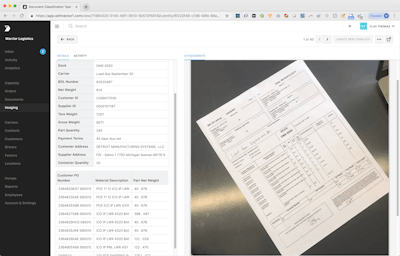 Digital payment systems, like Comchek Mobile, help drivers and fleets go paperless by sending and receiving funds.
Digital payment systems, like Comchek Mobile, help drivers and fleets go paperless by sending and receiving funds.As an essential service, transportation companies are free to operate as normal during the coronavirus pandemic, although for safety precautions, many have transitioned their back office to a work-at-home environment.
In this emergency situation, any process that relies on paper documents, such as billing, payroll and accounts payable, can threaten business continuity by not being able to move to a virtual setting.
The present circumstances give motor carriers more reason to digitize the remaining holdouts in their businesses to not only work from home but maintain social distancing between their drivers and customers.
Electronic payments
Looking at the current situation through the lens of digital payments, fuel transactions have not changed much. Drivers still insert cards at the pump, but the COVID pandemic has caused fleets to change practices for payroll and settlements.
“We are considering it a new normal,” said Justin King, senior vice president of product innovation for FleetCor’s trucking business unit, Comdata. “The long-term effects of this thing are going to be sustained.”
Companies want to avoid having to mail checks or have drivers come inside the offices, he said. The Comdata OnRoad card serves the dual purpose of a fuel card and a personal fund card for drivers to receive payroll and settlements.
Transaction data that Comdata monitors daily shows that drivers are not spending as much due to economic concerns, he said. The daily balances on their OnRoad card accounts are slightly higher than normal.
Drivers can use funds loaded to Comdata OnRoad as a debit card at merchants that accept Mastercard. They also can make digital payments using the Comdata OnRoad mobile app, which King describes as “Venmo for truck drivers.”
The mobile app has the ability to transfer funds to other drivers, lumpers and other parties at no cost to parties that use an OnRoad card and mobile app.
Fleets have another option to send funds to drivers electronically via a Comchek mobile card. Drivers can also use the card and Comchek mobile app to make payments by entering the user ID of the person or vendor.
A digital proof-of-delivery
The COVID pandemic has given motor carriers an opportunity to make a push to eliminate paper documents to solve business challenges and improve work safety.
 Vector’s mobile app has a back office system that can instantly read and transcribe information from printed documents and handwritten notes.
Vector’s mobile app has a back office system that can instantly read and transcribe information from printed documents and handwritten notes.Brian Belcher, chief operating officer of Vector, a technology company that specializes in paperless freight workflows, has been working with shippers to come up with a different process that would not require the exchange of paper bill-of-lading documents with drivers.
Scanning (BOLs) through a mobile app is not enough, he said. “The industry has been looking to eliminate that paperwork.”
Vector is working to introduce a digital proof-of-delivery (POD) process between shippers and carriers that uses GPS, photos, text communications with dock workers and other data points as a substitute for a POD.
A process that is being tested now leverages SMS “bots” and text that replaces the need for drivers to scan documents with an app. Drivers can communicate with dock workers through text when they arrive for a pickup or delivery. The text is time and location stamped.
A digital version of a POD, such as in a PDF format, could be digitally passed from a shipper to a receiver through an email. The SMS process would still allow a dock worker to sign a document and indicate any over, short or damaged freight, he explains.
Vector is able to pull a document from the email exchanged between a shipper and receiver, and then extract the text to pass it through the SMS process between the driver and dock worker.
Most shippers and receivers are saying they really don’t have a need for a paper document right now, Belcher said. “The need to know if it is delivered and if there are any issues,” he noted. “There are a lot of other ways to do what a signature is doing.”
Whenever the COVID-19 crisis ends, the new digital processes motor carriers are using for driver payroll, payments and for shipping documents may cause them to never return to their old ways of doing business.












